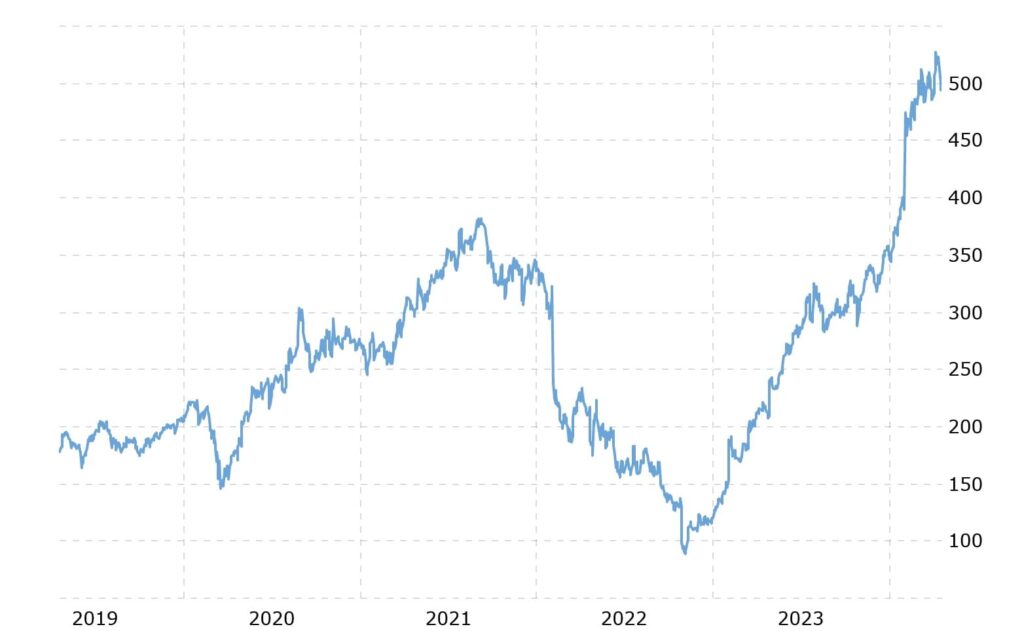Earnings season is a highly anticipated period when the majority of public companies release their quarterly reports. These reports reflect the season’s fiscal performance and tend to have a profound impact on individual stock prices, reshaping investors’ strategies and introducing increased volatility that can be used for the benefit of savvy individuals. Today’s article will explain how to trade earnings season and how investors can make the most of the event.
How does earnings season work?
About earnings season
While public companies can designate the start and end of their fiscal year, they must file four quarterly reports. However, most firms announce their quarterly results during the earnings season, which marks a period of heightened market volatility and anticipates changes in stock prices.
Both investors and analysts anticipate the data and crunch the numbers to formulate the financial trends and individual business performance, delivering a more accurate picture of the market’s state.
Recommended video: Earnings Season: How do Quarterly Earnings Reports Affect Stocks?
The effects of quarterly earnings
Wall Street analysts follow individual companies throughout the year, not just during the earnings season, giving forecasts about future earnings and sales. Therefore, informed investors already anticipate specific results from the quarterly reports.
When the earnings season starts and the reports roll out, several outcomes can come out from the clash between the analysts’ forecasts and delivered financials:
- Bearish (Bad): If the company does not meet estimates or predictions from the analysts and reports a drop in sales or profits, it can cause a severe drop in stock price. A clear example of this is Tesla (NASDAQ: TSLA), which experienced a sharp decline after its subpar Q4 report;
- Positive: A mildly positive indicator is the company beating the forecast on sales, which has the potential to boost the stock price;
- Better (Bullish): If the company surpasses its profit estimates, it is a significant boon to its outlook and will likely result in a stock price hike;
- Stellar (Best): When the company beats analysts’ estimates on sales and profits and further increases its guidance, it virtually guarantees a stock price hike. The most well-known recent candidate is Meta (NASDAQ: META), which smashed all estimates in their Q4 report and saw a surge of over 20% in stock price.
Although fundamentals play a dominant role in this assessment, it should be noted that psychological factors also have a considerable effect on stock price. Therefore, it is not uncommon to see investors rewarding companies that report less negative (but still negative) reports and punish companies that improved their reports, but less than the degree the investing public had anticipated.
How do you trade stocks during earnings season?
With all this in mind, let’s delve deeper into how you can trade earnings season for your benefit.
1. Keep track of the Wall Street expectations before the season begins
As part of the necessary research of individual stocks you invest in and keep in your portfolio, it is always wise to check what the Wall Street analysts think. It is essential to do so before the earnings season, as the relation between the estimates and the actual results will likely define how stock prices will change during the earnings season.
2. Prepare for surprises
Not even the best experts can guarantee their forecasts will come true. A degree of fault is to be expected, but sometimes companies upend what the market anticipated and go in the other direction. In these cases, investors scramble to reverse their positions, which sends the stock price into a positive or negative price swing.
What you can do is anticipate the surprise. In case of a negative surprise or the stock price taking a plunge, you can set a stop-limit order to sell the asset at a designated stop price. On the other hand, a positive price shock warrants a trailing order, in which case the stop price self-adjusts to be below the market price by the amount you specify.
3. Do not forget about the fundamentals
While meeting Wall Street expectations is important, it is by no means the only metric you should consider during the earnings season. Besides market expectations, you should always keep track of company fundamentals.
The stock price is the driving force behind your investment, but earnings season comes each quarter, and the lifespan of a company is much longer than that. If the performance drops below estimates, yet the company does not experience a dip in fundamental indicators, the price will likely readjust the next quarter. Do not make a rushed decision based only on the current quarter’s price correction.
4. Long-term strategy is better than seasonal activity
Investing is done best when you have a long-term strategy and a well-defined investing goal. It is important not to sacrifice your long-term strategy for a single earnings season event. If the company has severe financial health issues behind its faltering reports and you see no chance of recovery, liquidating your position might be best. However, this is not always the case, and many companies had bad quarters and sprung to magnificent recoveries.

How to trade earnings – the bottom line
Earnings seasons are investing festivals when the magic happens: stock prices turn, twist, and change, for better or worse, to reflect individual companies’ performance. The rise in stock price volatility presents great opportunities, risks, and emotional pressure, requiring a prepared and trained investing mindset.
With the tips mentioned in this article, you should be that much more ready to cope with everything and get through the season in a better position than you started with.
Disclaimer: The content on this site should not be considered investment advice. Investing is speculative. When investing, your capital is at risk.




